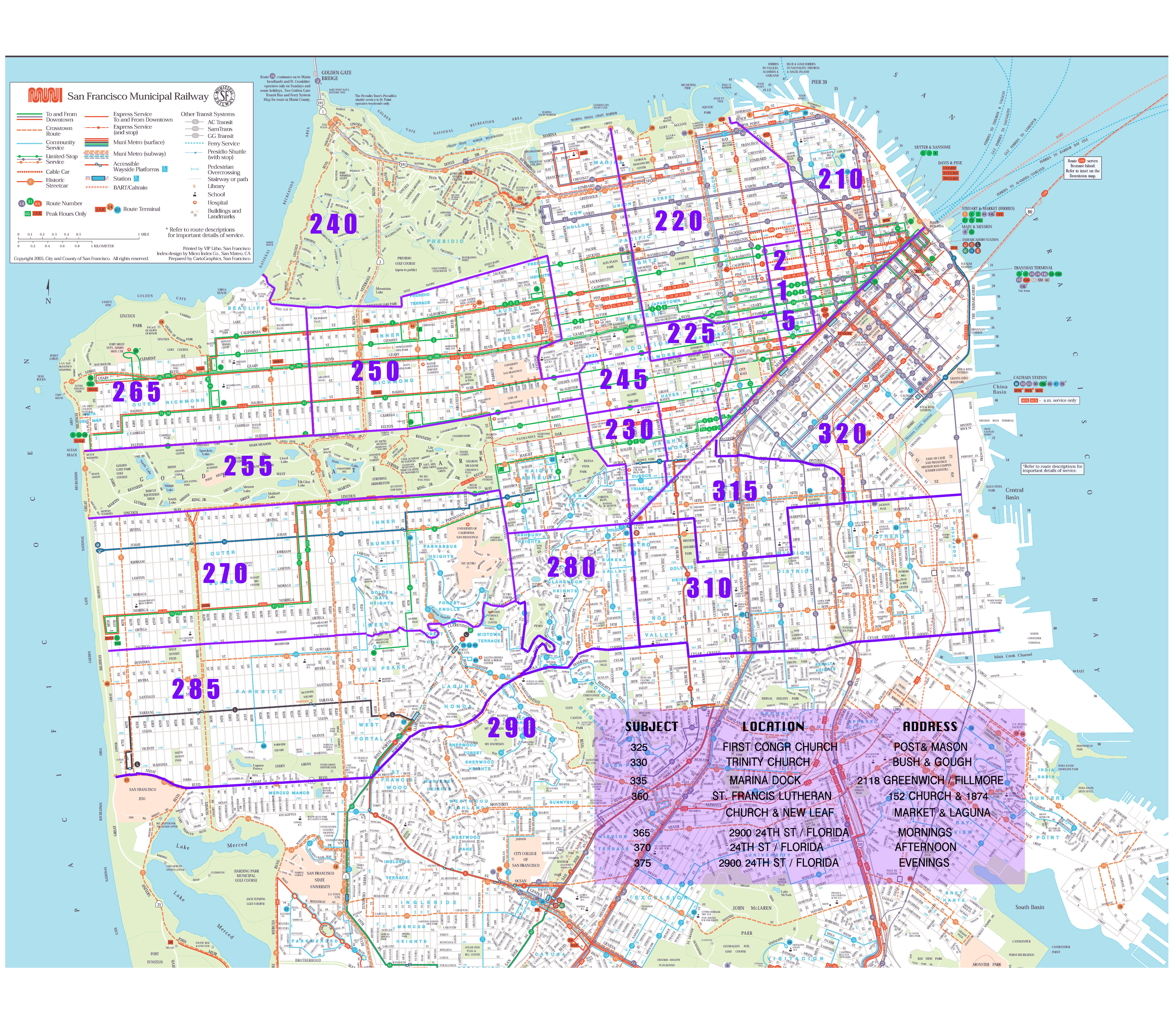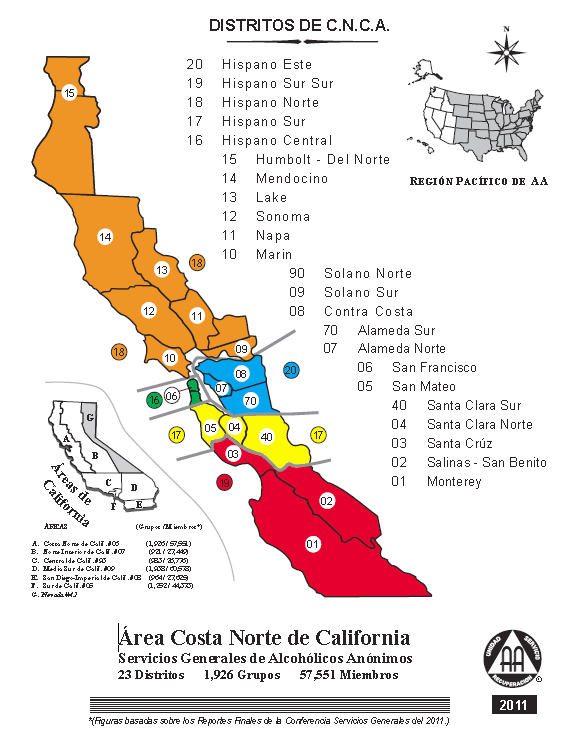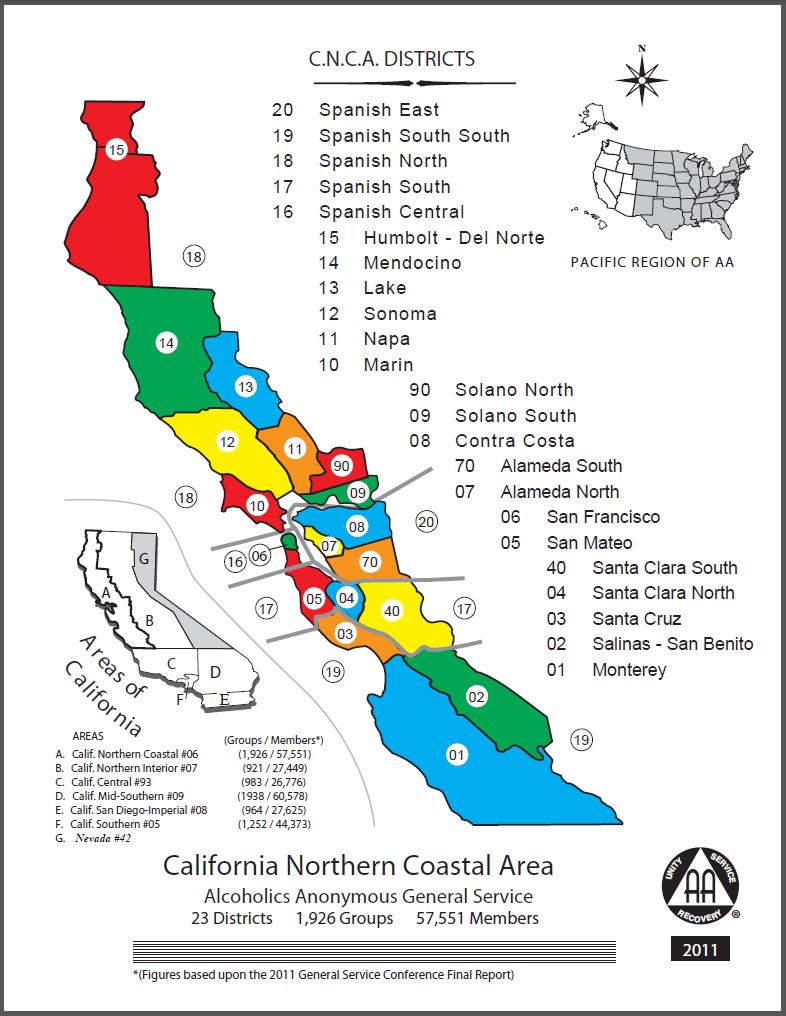Frequently-Asked-Questions
What is General Service?
The Twelve Traditions make clear the principle that A.A., as such, should never be organized, that there are no bosses and no government in A.A. Yet at the same time, the Traditions recognize the need for some kind of organization to carry the message in ways that are impossible for the local groups — such as publication of a uniform literature and public information resources, helping new groups get started, publishing an international magazine, and carrying the message in other languages into other countries.
The U.S./Canada Conference structure is the framework in which these “general services” are carried out.— The AA Service Manual page S15, reprinted with permission of AA World Services
What is the difference between General Service, Hospital and Institution (H&I) and Intergroup?
Each are autonomous 12-step service entities with distinct functions:
- General Service connects local group to A.A. as whole through our Area Delegate to the annual General Service Conference
- H&I take the message of AA to institutionalized alcoholics
- SF Marin Intergroup provides localized “boots on the ground” services to A.A. groups, including operating the Central Office in San Francisco and its bookstore, printing meeting schedules, maintaining the aasfmarin.org website, manning the 24/7 Teleservice hotline, etc.
What is the General Service structure?
The General Service structure is an inverted triangle – the groups who have ultimate authority are at the top, narrowing down to the districts that serve the local groups, narrowing down again to the areas that serve the districts, and finally to the annual General Service Conference, who in turn instructs the General Service Board and its subsidiary corporate boards (A.A. World Services, Inc. and A.A. Grapevine, Inc.) at the bottom.

What is a GSR?
GSR stands for “General Service Representative.” The GSR is the vital link in the chain of communication between the home group and AA as a whole. GSRs are elected by groups to represent them and to carry their group conscience to the District, the Area and the Conference. They also carry back Conference, Area and District actions to their group. More information can be found in the GSR pamphlet.
What is a DCM?
DCM stands for “District Committee Member.” The DCM is elected by the GSRs in one of District 6’s 24 sub-districts to provide a two-way line of communication between the sub-district and the District, assiting the DCMC (see below). They also share with groups about the responsibilities of general service work. More information can be found in the D.C.M. pamphlet.
What is a DCMC?
DCMC stands for “District Committee Member Chairperson.” The DCMC is elected by GSRs and DCMs to help facilitate the chain of communication between the Area Committee, the District Committee and the group General Service Representatives. This person also facilitates the monthly District meetings.
What is a Delegate? What does the Delegate do?
Each of the 93 General Service areas of AA in the U.S. and Canada has an elected delegate to represent them at the annual General Service Conference. The Delegate votes on behalf of his/her area at the General Service Conference. At an area assembly prior to the conference, the delegate is given the group conscience of the whole area to take to New York.
What is the General Service Conference?
Once a year (in late April) the Delegates from the service areas of AA meet in New York. In CNCA there is a Pre-Conference Assembly held to discuss the conference agenda items. There is also a Post-Conference Assembly held when the area Delegate reports back from the conference.
What is GSO?
GSO stands for “General Service Office” of Alcoholics Anonymous. It is located in New York City and serves the US and Canada in matters relating to Alcoholics Anonymous. More information on the services provided by your General Service Office can be found in the G.S.O. pamphlet.
What is AAWS?
AAWS stands for “Alcoholics Anonymous World Services.” This is essentially the business side of AA in that the printing and sale of AA publications falls under its purview.
What are districts, areas and regions?
The U.S. and Canada are split up into eight geographic regions. There are 93 Delegate areas. Areas are divided into districts, which consist of several cities. See page S91 in The AA Service Manual (see below for link) for more information.
Who serves on the District Committee?
The District Committee consists of GSRs, DCMC (District Committee Member Chair) and DCMs (District Committee Members) of each of the participating sub-districts in the district, the elected district officers and committee chairpersons.
May anyone attend the District Committee?
Yes, attendance is open to all members of A.A. who are encouraged to participate in events. However, only GSRs may convey group consciences during discussion.
Who is eligible to vote during District Meetings?
Current GSR’s, DCM’s, elected Liaisons, the DCMC and District Officers can vote. Alternates for these positions may vote if the person with whom they serve is not present.
What is a Service Sponsor?
A “regular” or recovery sponsor helps a member work the 12 Steps of Alcoholics Anonymous by passing on what they did and continue to do to stay sober. A service sponsor helps a member understand the 12 Traditions and the 12 Concepts and how these apply in service.
Where should my AA group send contributions to San Francisco General Service?
Click here for information on how to contribute to our district by mailing a check or submitting a payment online.




